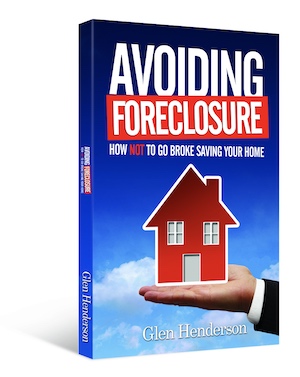How to Get a Loan Modification Approved
Loan modifications can save your finances and your house from foreclosure. It can be a great way to still meet monthly payments, while reducing those monthly payments to a sustainable amount. Loan modifications can be difficult to get, but they are one of the borrower’s best tools in avoiding foreclosure. Here’s what you can do to increase your chances of getting a loan modification approved:
Three Steps to Getting a Loan Modification
Be Eligible for a Loan Modification
You’ll be eligible for loan modification if you’ve missed a payment or know that you’re about to miss a payment. Usually you’ll also need proof of financial hardship. There are a variety of reasons that you can list for financial hardship. Some common ones include illness or disability, death and loss of income, natural disasters, loss of property, spikes in housing costs, and divorce.
Move Sooner Rather than Later
Speed really is critical to getting your loan modification approved. If you run to your lender after a couple missed payments and let them know that you’re not going to be able to make a payment, you’re giving them information they already know. It looks like you’re not on top of your finances, and it doesn’t exactly give them confidence that you’re telling the whole story now. If you don’t tell them you’re going to miss a payment before you do, how can they trust you that you’re going to be able to make modified payments now?
So to get a loan modification approved, move quickly to let your lender know that you’re going to have trouble paying. If you can tell them a month in advance that you’re going to struggle to make your payments, you’ve got a better chance of getting modification.
Go Through the Application
These days you can apply for a loan modification completely online. You should be able to apply through the lender themselves. Most lenders have loan modification programs that help qualified borrowers avoid foreclosure. Lenders also don’t want to go through foreclosure, because the process can be messy and time consuming.
The application will require you to explain your financial information. Sometimes the loan modification application will require you speak to your lender or servicer directly to explain your situation, so be prepared to talk through it in succinct, direct terms. Your actual application will be in writing, and you usually need to provide proof of hardship with the application. This may include pay stubs, tax returns, bills, asset information, and more. Any financial information that you provide—and more complete information is always better—will help your odds.
Government Loan Modification Programs
At times, the United States government will offer loan modification programs that can be accessed to help prevent foreclosure. While the last widely-available program ended in 2019, there might be a new program at the time that you’re reading this. Lenders can usually help you assess your government-assisted options to stay on track with your payments.
Loan Modification Scams
Beware of scams! If you are facing foreclosure, you might end up on a sales or scam list that includes other people facing foreclosure. Sometimes these lists end up in the hands of scammers who offer loan modification programs that sound a little too good to be true. If a loan modification program sounds too good to be true—it probably is.
What Kind of Modification Can I Get Approved For?
Temporary
Other loan modification programs are temporary, meaning that you get payments reduced for a few months but not for long. You might get 6 months of lower payments before the amount bumps back up to the normal mortgage payment amount. If you get a temporary reduction, the term of the mortgage should only be extended by a few months.
Temporary loan modifications are generally available to lenders who have experienced a temporary financial hardship. If you are unable to pay for the next 6 months, or unable to pay in full, but you expect to be back to firing on all cylinders financially at the end of that period, then you might get a temporary loan modification.
Permanent
Some modification programs are permanent, meaning your monthly payments are reduced for the entire term of the loan. This usually extends the term of the loan by 5 or 10 years, depending on the reduction in payment. Permanent modification reductions usually have additional stipulations: like your interest rate goes up or you can’t miss a single payment for 2 years without forcing foreclosure.
Permanent loan modifications are generally available for people who are experiencing a lasting financial hardship—but not a hardship that is so drastic it prevents you from being able to pay entirely. If you can make good on your commitment with slightly lower payments, you might be able to get a permanent loan modification.




